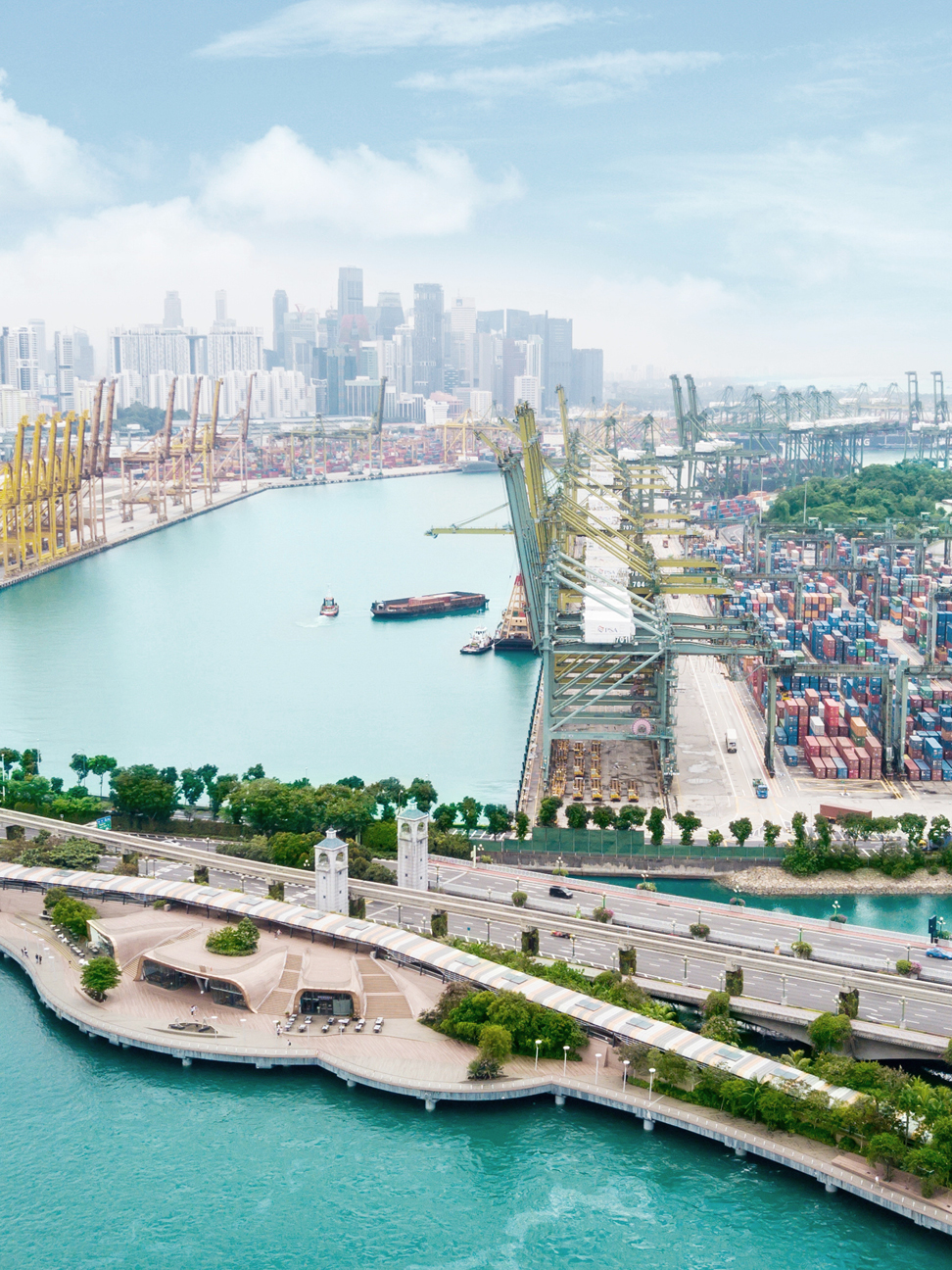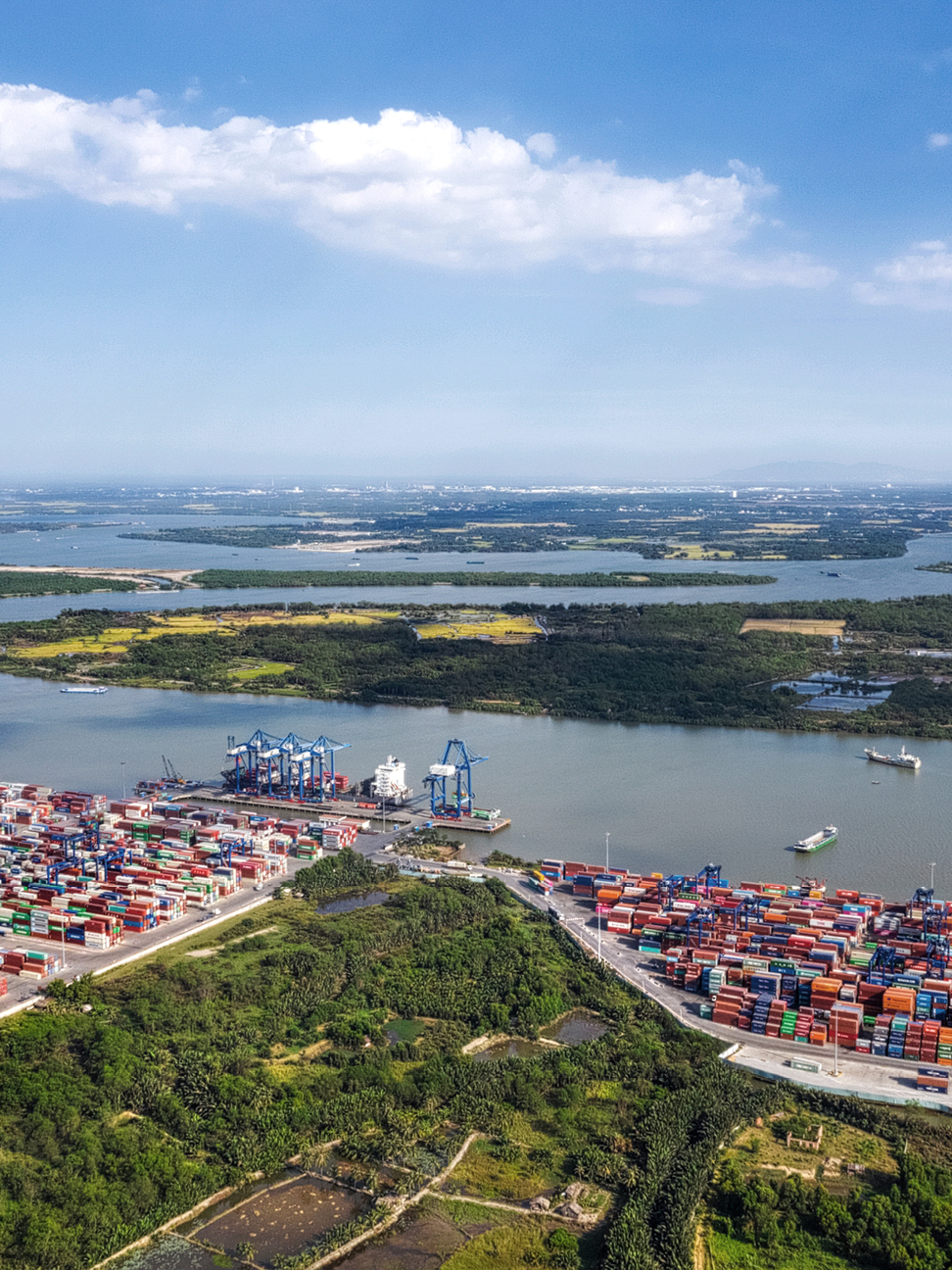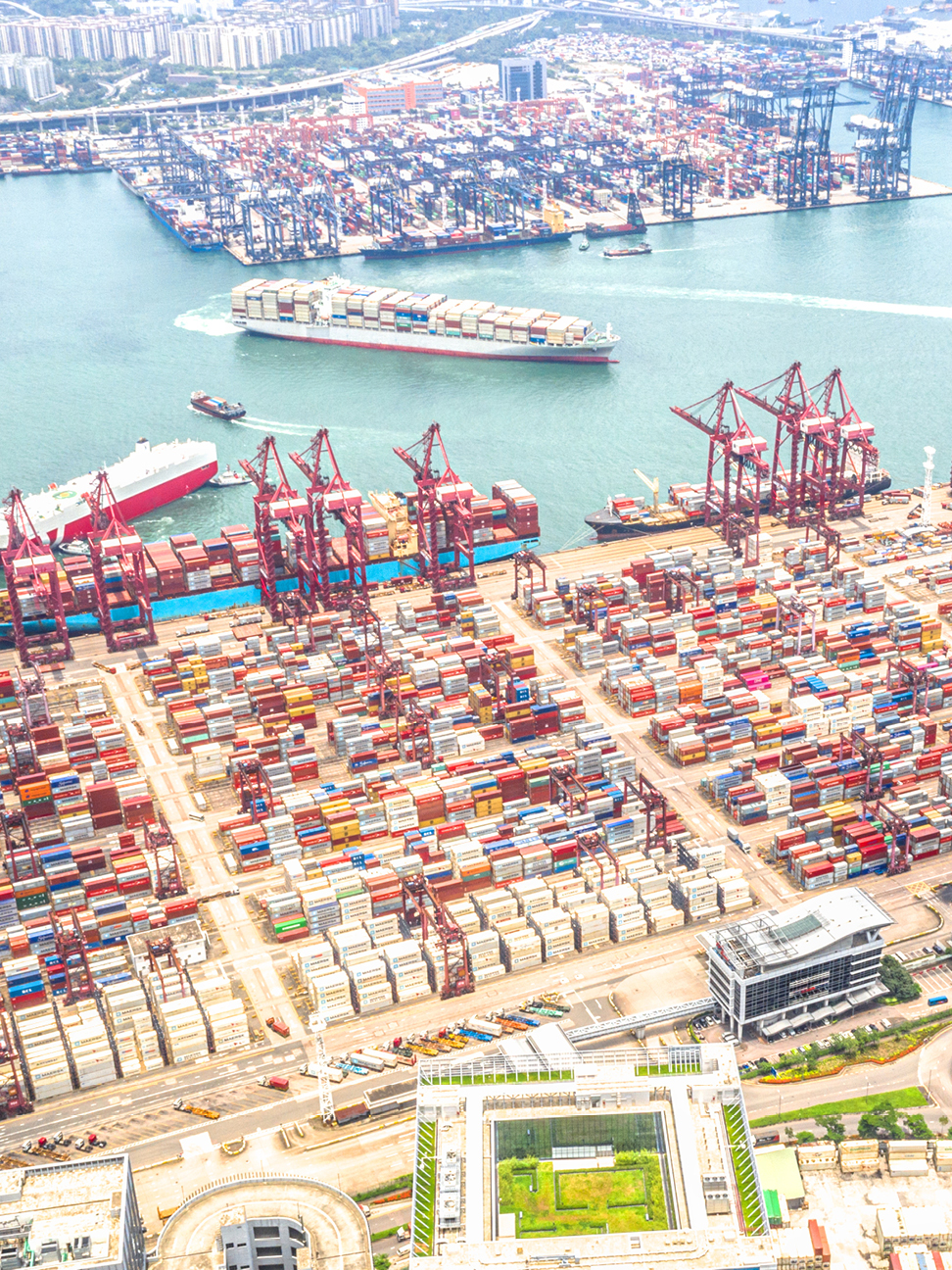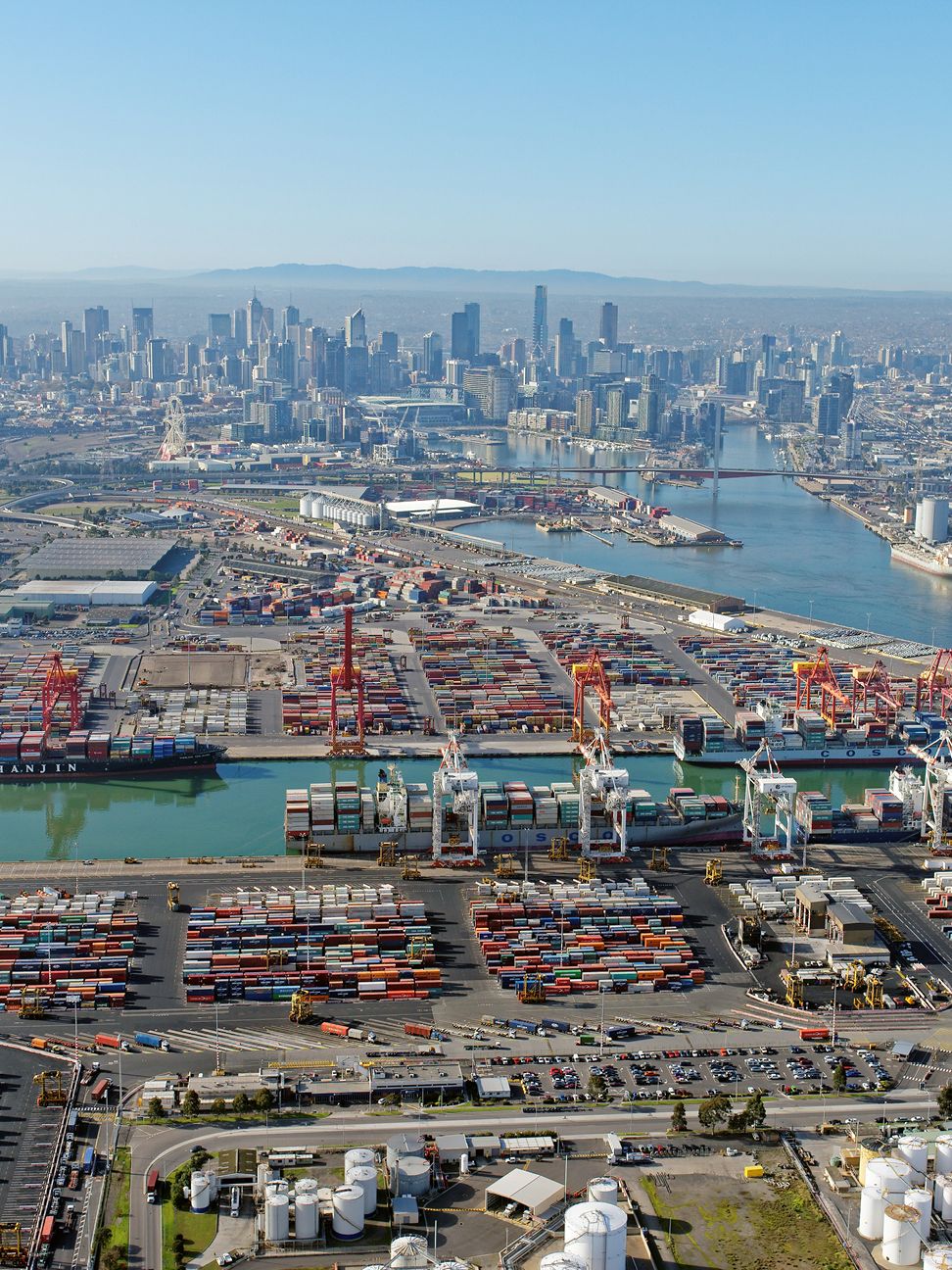Future Cities
2022 Global Seaport Review: Singapore
Navigating evolving global seaport regions and their impact on industrial real estate
December 13, 2022 4 Minute Read

The pandemic accelerated e-commerce sales, driving demand for modern logistics space, while supply chain disruptions triggered demand for inventory space as companies adopt a ‘just-in-case’ inventory approach. The new Tuas Port will be the largest fully automated container terminal in the world by 2040, ensuring Singapore’s role as a leading transshipment and logistics hub.
Overview
The Port of Singapore is the world’s second-busiest container port, handling 37.5 million TEUs in 2021. Container handling volumes fell by less than 1% in 2020 and rebounded the following year, exceeding pre-pandemic levels. In 2019, the port and broader maritime industry accounted for an estimated 7% of Singapore’s total GDP, employing approximately 170,000 people.
The port accounts for a fifth of all transshipment activity globally. Large parts of Singapore, including the container port, fall into one of the city-state's Free Trade Zones, providing tax advantages including no import tax on imported or transshipped goods.
Figure 1: TEU volumes
Source: CBRE Research, Port of Singapore, 2022.
Figure 2: Population demographics
Source: macrotrends.net, 2022.
The Tuas Mega Port will become the world’s largest automated container terminal upon completion in 2040
Port features
The port, a good portion of which is automated, is equipped with over 200 quay cranes as well as gantry cranes capable of handling containers from large ships.
Tuas Mega Port, currently under construction on reclaimed land at the extreme western end of the city-state, is one of Singapore’s flagship infrastructure projects. The first phase opened in late 2021 and comprises 21 berths, adding 20 million TEUs of capacity.
When the fourth and final phase of the S$20 billion project completes in 2040, Tuas Port’s annual capacity will reach 65 million TEUs, close to double the port’s current level. It will be the world’s largest fully automated container terminal, using over 2,000 automated vehicles. Tuas Port is being built on a greenfield site and is expected to achieve net-zero carbon emissions by 2050. The port will be able to serve vessels more than 400 meters long.
Figure 3: Port details
Source: CBRE Research, Port of Singapore, 2022.
Trade partners
Singapore is ranked third globally on the United Nations Port Liner Shipping Connectivity Index. The port’s top five trading partners are Mainland China, Hong Kong SAR, the U.S., Malaysia and Indonesia. The port is generally seen as an intermediary between Southeast Asia and the rest of the world, with raw materials from the region exported and finished goods imported. Electrical machinery and computing equipment also represent a significant share of exports.
Intermodal transportation
Singapore is a hub for sea-air cargo throughout the region, facilitating the transit of goods from Europe to other locations in Southeast Asia. It has established intermodal solutions to cope with the surge in e-commerce. An agreement was recently signed with the nearby island of Batam, Indonesia—a key hub for electronics manufacturing—to transport time-sensitive cargo to Singapore by sea, which is then flown to other countries.

Real estate influence
With a population of 5.9 million and warehouse inventory topping 122 million sq. ft., Singapore boasts one of the highest rates of warehouse space per capita in the region.
Singapore’s substantial investment in Tuas Port will link the project to industrial districts in the Western region, such as the Jurong Lake District, the Jurong Innovation District and the Tuas Industrial District.
Vacancy rates are low, at 2.1% as of Q2, due to increasing e-commerce penetration. As e-commerce grows in Singapore, the desire to locate advanced logistics facilities in Tuas will fuel long-term demand. In addition to e-commerce, occupiers expanding in Tuas include food users, 3PL providers, semiconductor manufacturers and electronics companies. The pharmaceutical and biomedical sectors also remain active.
Year-to-date, prime logistics rents are up 4.1%, largely because of strong leasing demand and a shortage of quality warehouse space. While the government is looking to ramp up industrial land supply via the H2 2022 IGLS Programme, completions will take two-to-three years. Thus, further rent increases are expected in the near term.
Figure 4: Industrial & logistics market stats
Source: CBRE Research, H1 2022.
Explore Global Seaports by Port
Related Services
- Property Type
Industrial & Logistics
We represent the largest industrial real estate platform in the world, offering an integrated suite of services for occupiers and investors.
- Property Type
Ports
Manage all your integrated logistics needs with services that combine our industrial roots with extensive supply chain experience.
- Consulting
Supply Chain Advisory
CBRE Supply Chain Advisory helps you solve complex business problems and build distinct advantage through supply chain transformations.
APAC Research
Insights in Your Inbox
Stay up to date on relevant trends and the latest research.







